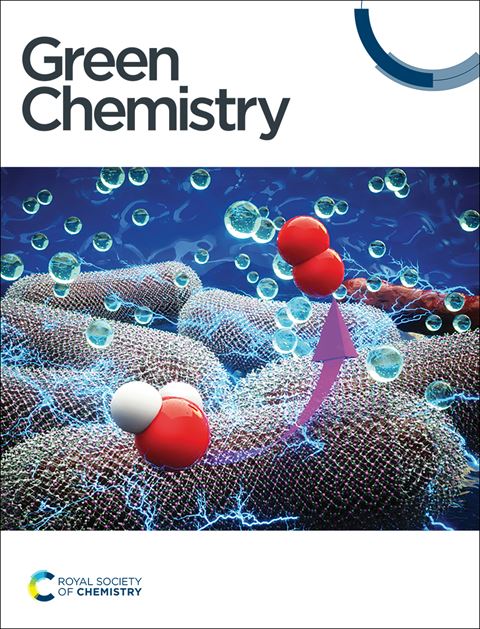从 Evernia prunastri 中提取生物活性物质和生物聚合物用于配制抗菌生物基薄膜的替代方法
IF 9.3
1区 化学
Q1 CHEMISTRY, MULTIDISCIPLINARY
引用次数: 0
摘要
近年来,人们对地衣代谢物的生物特性的兴趣日益浓厚,这证明了进一步探索的不同需求和挑战,包括开发使用更安全溶剂和更有效利用能源的绿色加工方法。有人建议在超临界二氧化碳萃取之后采用微波辅助水热处理,以连续萃取生物活性物质和生物聚合物馏分。此外,还结合了天然深层共晶(NaDES)作为共溶剂。使用 NaDES 同时提取地衣酸、抗氧化剂和低聚糖,回收的多糖显示出足够的机械性能,可用于配制对革兰氏阳性细菌具有抗菌作用的薄膜。利用生态尺度对三种不同工艺进行的环境评估表明,NaDES 微波萃取法毒性低,多糖萃取率高,是三种工艺中最具可持续性的一种。本文章由计算机程序翻译,如有差异,请以英文原文为准。


Alternatives for the extraction of bioactives and biopolymers from Evernia prunastri for the formulation of antimicrobial bio-based films†
The recent growing interest in the biological properties of lichen metabolites has evidenced different needs and challenges for further exploration, including the development of green processing with safer solvents and more efficient use of energy. Microwave assisted hydrothermal processing, applied after supercritical CO2 extraction, was proposed for the sequential extraction of bioactives and biopolymer fractions. Alternatively, it was combined with natural deep eutectics (NaDES) as cosolvents. Lichenic acids, antioxidants and oligosaccharides were simultaneously extracted using NaDES, and the recovered polysaccharides showed adequate mechanical properties for the formulation of films with antimicrobial action against Gram positive bacteria. An environmental assessment of the three different processes using the Eco-Scale suggested that the NaDES microwave extraction was, due to its low toxicity and good extraction yield of polysaccharides, the most sustainable of the three processes.
求助全文
通过发布文献求助,成功后即可免费获取论文全文。
去求助
来源期刊

Green Chemistry
化学-化学综合
CiteScore
16.10
自引率
7.10%
发文量
677
审稿时长
1.4 months
期刊介绍:
Green Chemistry is a journal that provides a unique forum for the publication of innovative research on the development of alternative green and sustainable technologies. The scope of Green Chemistry is based on the definition proposed by Anastas and Warner (Green Chemistry: Theory and Practice, P T Anastas and J C Warner, Oxford University Press, Oxford, 1998), which defines green chemistry as the utilisation of a set of principles that reduces or eliminates the use or generation of hazardous substances in the design, manufacture and application of chemical products. Green Chemistry aims to reduce the environmental impact of the chemical enterprise by developing a technology base that is inherently non-toxic to living things and the environment. The journal welcomes submissions on all aspects of research relating to this endeavor and publishes original and significant cutting-edge research that is likely to be of wide general appeal. For a work to be published, it must present a significant advance in green chemistry, including a comparison with existing methods and a demonstration of advantages over those methods.
 求助内容:
求助内容: 应助结果提醒方式:
应助结果提醒方式:


